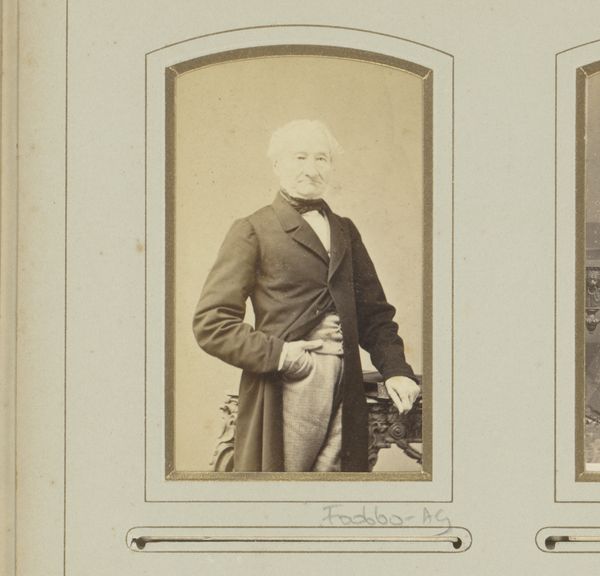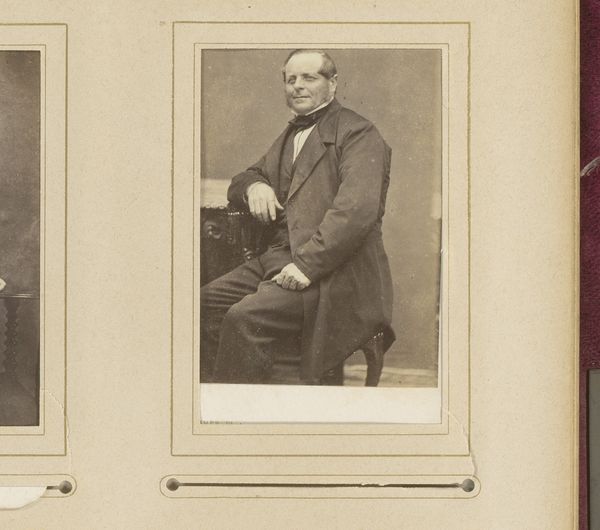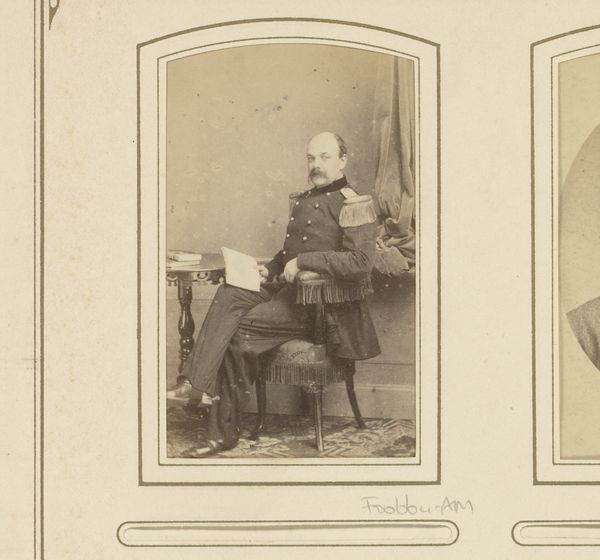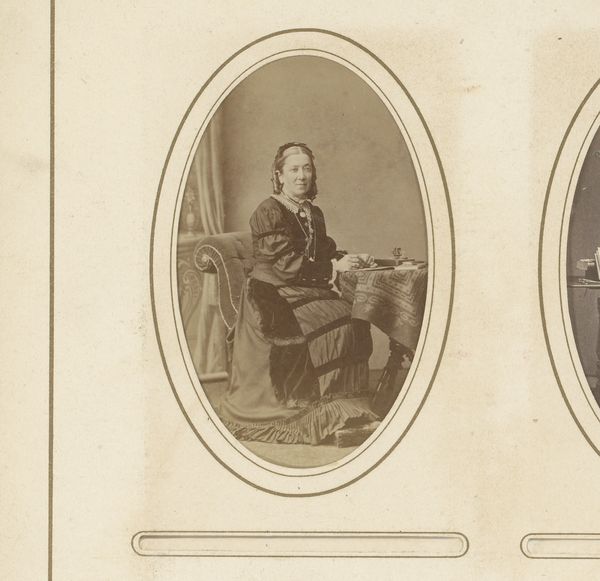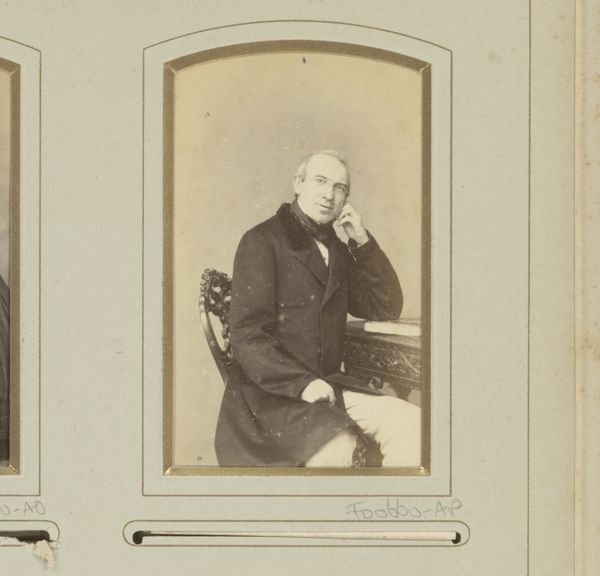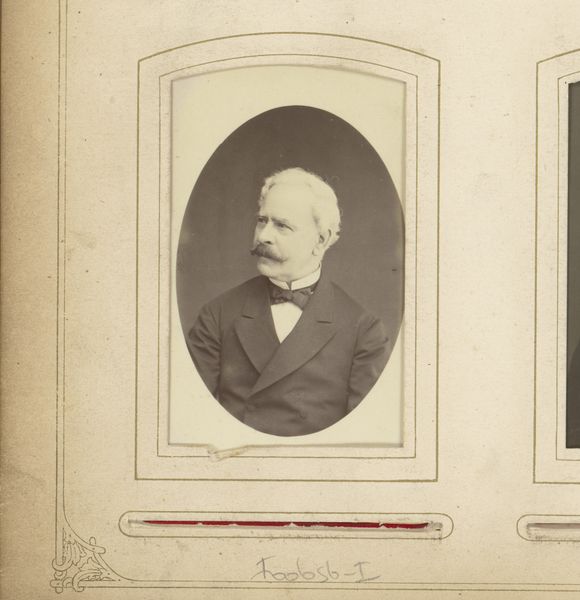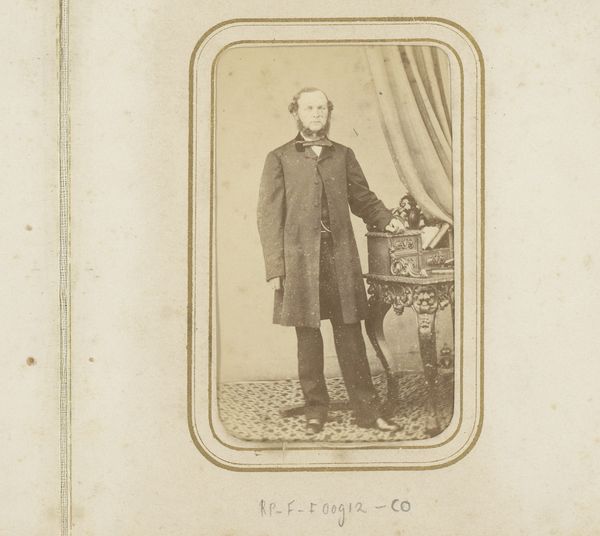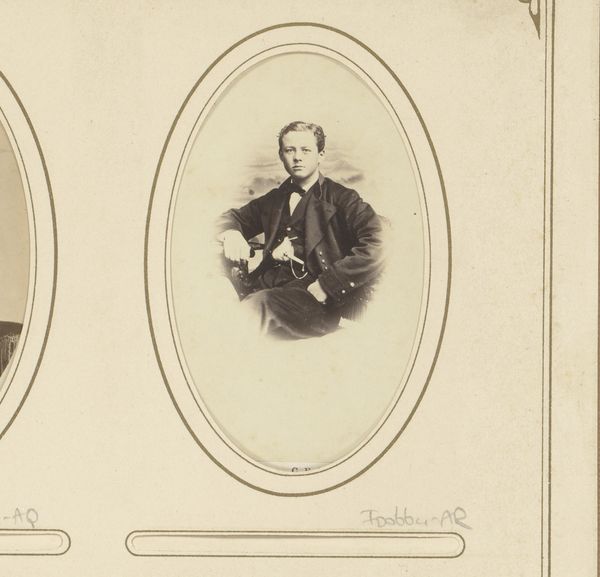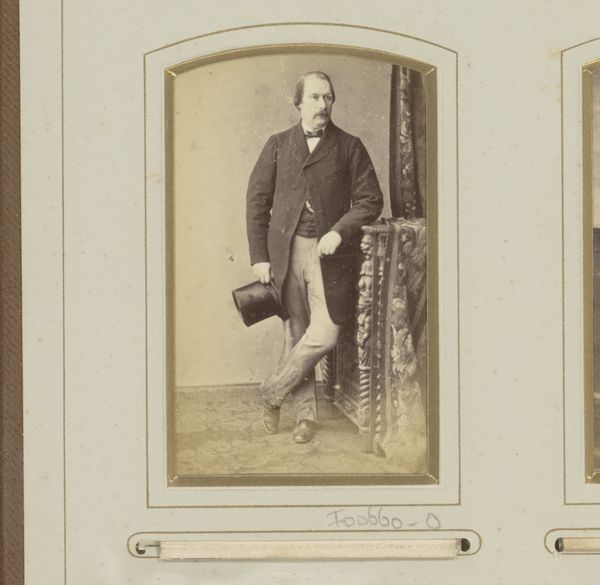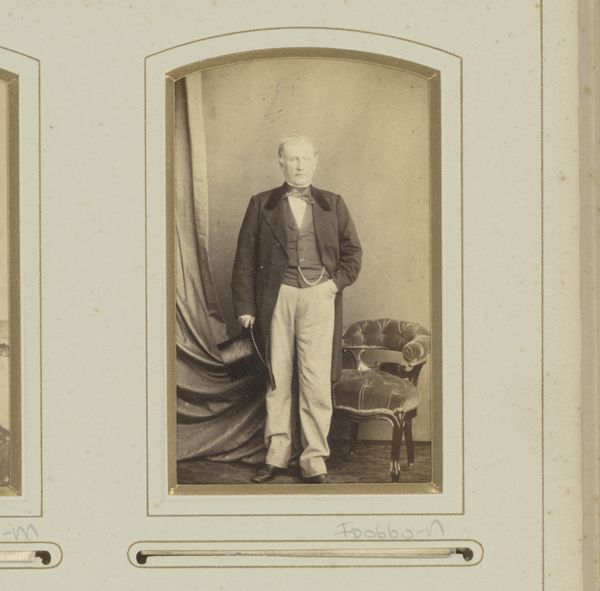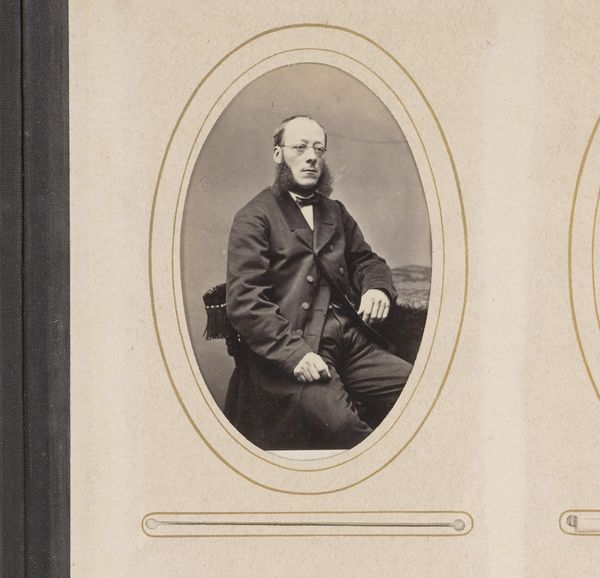
photography
#
portrait
#
photography
#
historical photography
#
19th century
#
genre-painting
#
realism
Dimensions: height 85 mm, width 51 mm
Copyright: Rijks Museum: Open Domain
Editor: We’re looking at "Portret van een staande man," which translates to "Portrait of a Standing Man." It's an older photograph, placing its origins somewhere between 1855 and 1890. It presents this sort of posed formality. What captures your attention, observing the image? Curator: The rigorous geometry of the composition is paramount. Note the rectilinear form created by the backdrop paneling that is echoed in the shape of the photograph itself. This contrasts quite starkly with the somewhat softer lines of the drapery, and is further softened by the organic form of the man himself. Editor: I see it. There's something interesting about how the backdrop both emphasizes and contrasts the sitter's form. What's the effect of that balance? Curator: The layering is key. The surface qualities – the light and shadow that play across the scene – interact to define the figure’s presence. The muted tones of the photograph enhance this, pushing us to consider form and structure over any illusionistic depth. How do the varying textures and light intensities contribute to the work's emotional tenor? Editor: It makes me consider what this was supposed to *mean.* The composition lends an air of quiet dignity and restrained energy, as if attempting to fix the figure. What did photographs mean for realism, representation and status during this period? Curator: Precisely. This interplay between control and spontaneity defines much of the artistic ambition from this period. Examining these elements permits us to speculate as to how a work might be interpreted by future observers, regardless of the artist's intent. Editor: I've definitely never considered the textures and geometries in quite that way before!
Comments
No comments
Be the first to comment and join the conversation on the ultimate creative platform.
